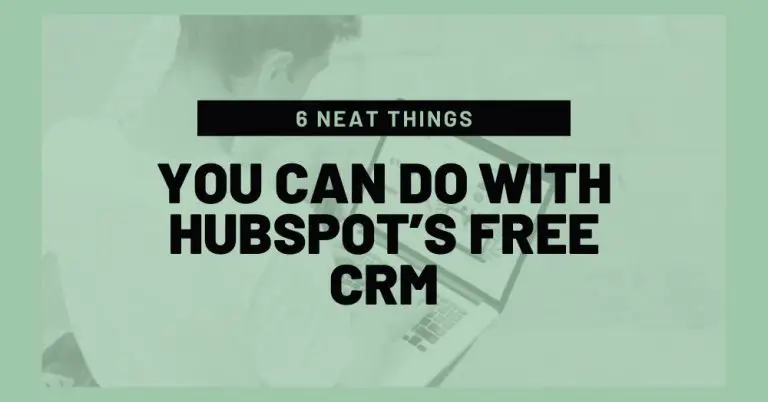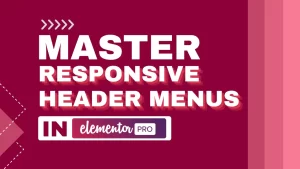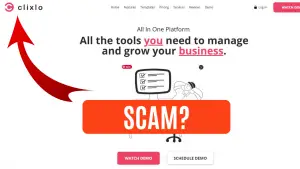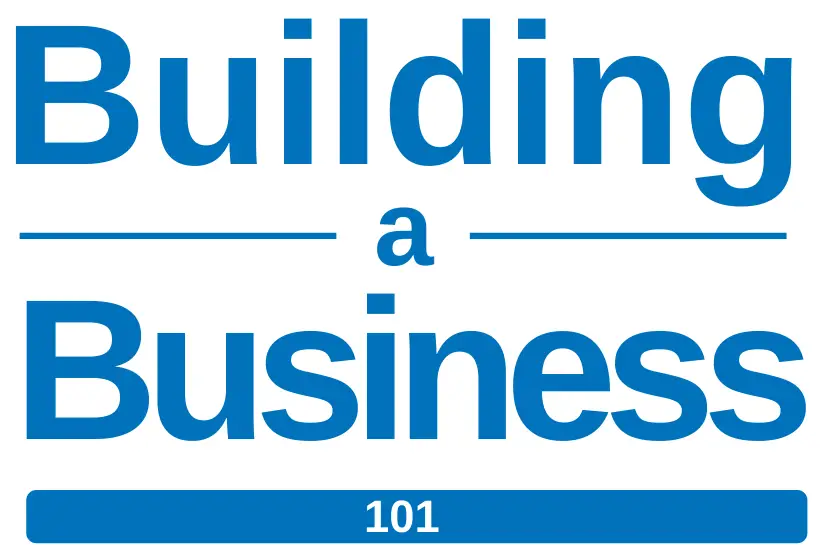To say that owning a business has its challenges is an understatement. There is so much involved with managing a company or even running a team as an intrapreneur. From dealing with personnel issues to developing product or service ideas, the daily checklist can quickly expand.
This hectic schedule makes it easy for your most important constituents to fall between the cracks: your customers. Someone on your team can easily miss that phone call or social media message from a customer if you don’t have a way to be notified of these actions. Additionally, you or your team may catch the call or message but fail to follow-up.
Today, staying in consistent communication with potential customers, long-time clients, or partners is essential. Understanding this is where a Customer Relationship Management System (CRM) comes into play. CRMs allow business owners and marketing teams alike to organize, track, and stay in touch with leads to turn these individuals into actual customers. According to Salesforce, CRMs can increase sales by up to 29 percent, and sales productivity by 34 percent.
One of the most popular CRM tools that are on the radar of many marketers is Hubspot CRM. Its ease-of-use, pricing, and an extensive collection of “how-to-use” guides have piqued the interest of many and for a good reason.
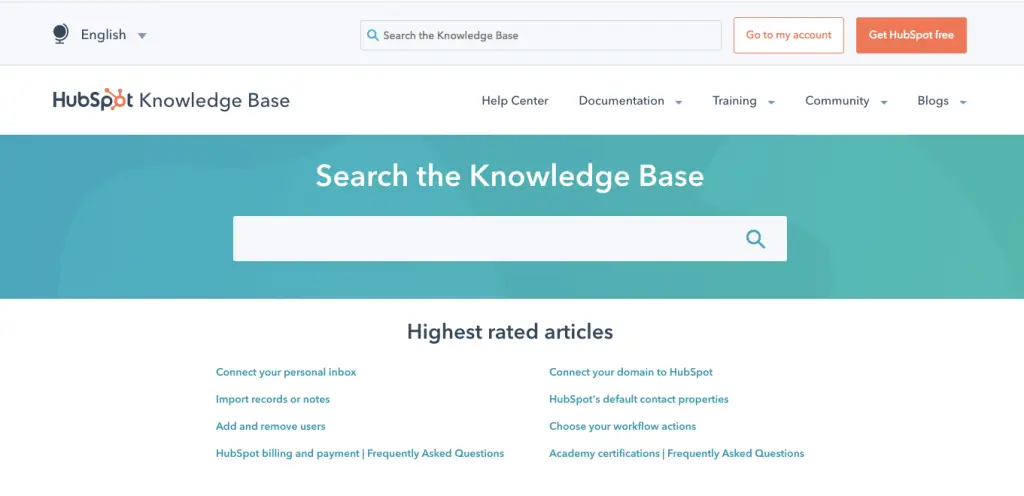 Hubspot Knowledge Base
Hubspot Knowledge BaseWhat Is Hubspot CRM and Is It Free To Use?
Keeping track of your customers can seem arduous and overwhelming, especially if you have a small or non-existent marketing team. Hubspot CRM exists to make the task of tracking and organizing your leads straightforward and affordable.
Hubspot CRM is free—however, it does include a paid tier with more involved features that include meeting scheduling, advanced reporting, live chat options, and more personalized outreach options. Nevertheless, signing up for the free tier is as easy as answering a few questions about your company and jumping into the app’s user-friendly interface.
While tools like Zoho and Salesforce may offer complex and more robust features, Hubspot CRM makes contact management and customer follow-up more manageable, even for a team of one. You don’t need to have an IT professional code a database or even have a full-on understanding of the CRM process to begin using this tool (even though that can help).
Hubspot CRM includes a wide range of tools to help you start tracking and connecting with leads. From managing contacts to keeping track of conversations, you have many resources at your disposal.
In addition to usability, Hubspot CRM provides a variety of features to stand apart from the pack. Take a look at these six fresh and unique offerings that Hubspot CRM has to help you get started on contact management and customer relationship building.
1/ You Can Record Up to 1,000,000 Contacts
Typically whenever you are using the free version of a software tool, there are limitations, especially when it comes to storage. Tools like MailChimp, Zoho, and many other apps limit the number of contacts or companies you can add to their databases. This reason is why Hubspot’s CRM stands out with this feature. Whether you have a free or paid plan, you can record up to 1,000,000 contacts.
This feature makes Hubspot CRM a reliable option for solopreneurs, large corporations, and everyone in between. This offering also allows you to keep using Hubspot CRM, even if your business grows. You don’t have to worry about eventually switching your contacts to another CRM—which can be a significant hassle.
2/ Attach Your Personal Email Inbox to Hubspot
Many CRM systems tout their email integrations. This action makes sense as email platforms are where you will likely have the most contact with clients in your CRM. This is all the more reason why Hubspot allowing you to attach your email inbox to the CRM is an excellent benefit.
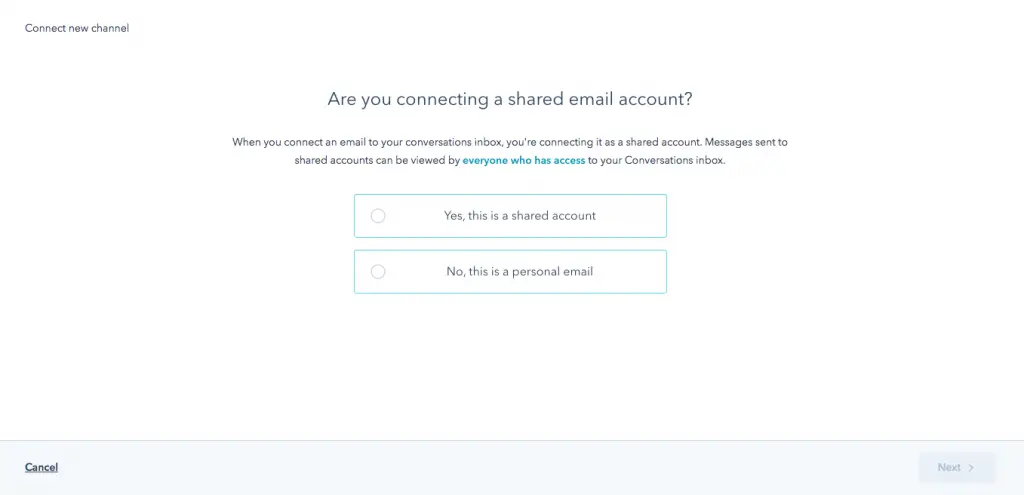 Attaching email to Hubspot CRM
Attaching email to Hubspot CRM This action enables you to add contacts to your CRM with the click of a button without having to leave your email client to do so.
Additionally, you can handle email messaging all on Hubspot CRM, as you can send one-to-one emails directly from the platform. It may not seem like much, but that 30 seconds to a minute it takes to switch between the CRM and Gmail or Outlook is time you can use for something else. Lastly, the tool also allows you to log email follow-ups to the CRM easily. These features can add greater efficiency to your day and help you track significant email interactions.
3/ Smart Email Notifications
The average professional spends 28 percent of the day reading or answering email— for the average full-time worker, that is 2.6 hours. That is a lot of messaging to track, organize, and follow-up on. This reason is why Hubspot CRM’s email notification tool is an excellent feature for solopreneurs, entrepreneurs, and CEOs alike.
First, you can use Hubspot CRM to automate customized follow-up emails and create templates to respond to standard questions. Nevertheless, one of Hubspot CRM’s most valuable features is that it can notify you when a customer opens your email. This action enables you to create better strategies for quickly following up with potential leads. Overall, Hubspot is a robust tool for effectively tracking and sending emails to customers.
4/ Easy Document Retrieval
Think about all the times you were preparing for a client meeting and had to look through your email or a cloud-based drive to locate relevant documents for the discussion. Hubspot CRM’s document retrieval features help to prevent this common problem.
You can attach documents from Google and Dropbox to contacts on your CRM. Therefore, when you access the profile of a connection for a sales call or general meeting, you can see the interactions you have with them as well as the documents associated with them. This feature can save a lot of headaches and time.
5/ Landing Page Creation
Over the years, landing pages have become critical in lead generation and management strategies. These pages are meant to receive and convert traffic. According to Hubspot, companies see a 55 percent increase in leads when they raise their number of landing pages from 10 to 15 percent.
Hubspot CRM makes it easy to create landing pages that are professional, mobile-optimized, and connected to your CRM. Instead of customizing your pages through code, you will instead use a drag-and-drop editor to create a well-designed landing page. Hubspot CRM’s landing pages even allow you to display dynamic content based on a contact’s location, source, or even lifestyle stage. Ultimately, you can develop a comprehensive lead generation tool without experiencing a steep learning curve.
6/ Straight Forward Deal Management
Even on the free version of Hubspot CRM, you can build a robust sales pipeline. You would think that a free software tool would only allow you to track and record customer interactions. Nevertheless, Hubspot CRM goes a bit further and enables you to develop a sales strategy for customers.
 Hubspot Deal Creation
Hubspot Deal CreationHubspot’s Deals management feature is excellent for sales staff—especially if you have a smaller team. This feature enables you to schedule appointments, determine who is qualified to buy, schedule presentations, and track when customers decide to buy. While you need to upgrade to create a sales pipeline process, the free version allows you to create and track deals seamlessly.
A Robust CRM—Even If You Stick With the Free Version
If you are new to running a business and want to understand what a CRM can do, Hubspot CRM is a great tool to experiment with. While some of the more advanced automation, marketing analysis, and goal tracking features require a paid plan, you can still get a well-rounded product with the free version. If all you need is contact management, task delegation, meeting scheduling, and the other standard CRM hallmarks, Hubspot CRM is worth trying.
